The conservation card: Land trusts and the forests they preserve play a crucial role in fighting climate change
| Published: 01-02-2023 11:23 AM |
For Sale: 200 Acres. Build to Suit. You see a lot of these enticements on the highways, and anyone with a wad of cash and a fleet of backhoes likely salivates at the sight of them.
It’s estimated that 28,000 acres of New England forest each year are permanently converted to development, coming out to about 65 acres of forest per day. When those trees are cut down, the region loses a lot more than shade for humans and condos for squirrels. With their ability to absorb carbon in staggering amounts, the region has, right in the forests of its own backyard, a partial solution to climate change — but only if action is taken to preserve them.
That’s where local land trusts can play a key role. These nonprofits — there are several in the Valley, including Kestrel Land Trust, Hilltown Land Trust and Mount Grace Land Conservation Trust — work with landowners, communities, and state and federal agencies to secure property for conservation, from wildlands to woodlands, farmlands and riverlands.
It’s the forestland they help preserve that is key in a climate change world. That’s because forests are one of the few natural carbon capture sources out there, having the ability to suck massive amounts of CO2 right out of the atmosphere and store it. They give us sequestration, and keep on sequestering, sort of a “groundbreaking technology” that’s been all around us the whole time.
New England forests already absorb 14% of carbon emissions, but they could do substantially more, almost twice that, according to a new report from the Highstead Foundation: “New England’s Climate Imperative — Our Forests as a Natural Climate Solution,” which urges the adoption of five pathways to human survival, with avoiding deforestation tops among them.
“Reduce deforestation to 7,000 acres a year and 74 million tons of carbon dioxide would be kept out of the atmosphere,” the report states. “Less than 4% of our forests are protected as wildland reserves. Just by protecting 10% of New England forests, allowing them to grow and mature, it would store an additional 50 million tons by 2050.”
The report also calls for improved forest management to maximize carbon sequestration; using wood as building materials instead of steel and concrete — the trees keep storing carbon even after we saw them up — and 50% of new buildings, even the real tall ones, should be made of wood; and ending the practice of clear-cutting forests to install solar arrays.
Advancing the “Wildlands and Woodlands” vision found in the report are the area’s land trusts, which have an ever-increasing role in stemming the climate change onslaught before it’s too late.
Article continues after...
Yesterday's Most Read Articles
 Jena Schwartz: Things I have not said
Jena Schwartz: Things I have not said
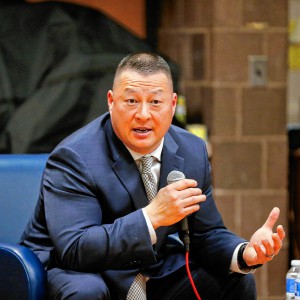 Amherst police chief finalists stress anti-racism cred, discuss other issues in separate meetings with public
Amherst police chief finalists stress anti-racism cred, discuss other issues in separate meetings with public
 In federal lawsuit, teacher accuses Amherst schools of violating civil rights, other district policies
In federal lawsuit, teacher accuses Amherst schools of violating civil rights, other district policies
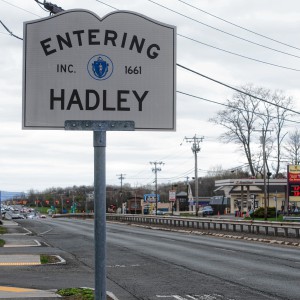 As Hadley works on energy storage bylaw, some question why the town has to allow them at all
As Hadley works on energy storage bylaw, some question why the town has to allow them at all
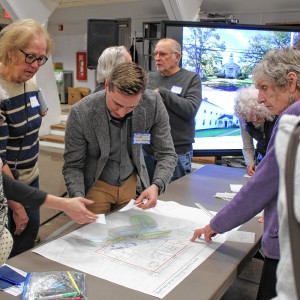 South Deerfield residents share views on senior housing options
South Deerfield residents share views on senior housing options
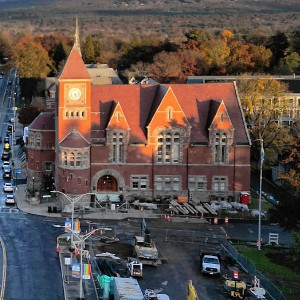 Amherst council approves mandatory rental inspection program
Amherst council approves mandatory rental inspection program
“There’s a growing awareness that forests can be a solution to climate change,” said Kristin DeBoer, executive director of Kestrel Land Trust in Amherst. “We’re setting the goal of 10% of forests as wild land by 2050, where nature is free to be on its own. Carbon sequestration is a pretty tangible way to make a difference.”
Of course, it’s got to be troublesome for any landowner while significant bags of money are scattered in their path like rose petals, and the land trusts understand that sometimes, they have to be competitive. Community Preservation Act funds, raised by towns through a tax surcharge, can be one tool to help.
“We do our best to offer fair market value,” DeBoer said. “The great thing about land trusts — we’re able to be on the ground, take something very complex and make it simple. Towns that have passed the CPA, Kestrel helps put that puzzle together.”
Projects can take anywhere from a few months to a few years, she said, but “it’s a way to protect places that people love forever, and it’s written in the Registry of Deeds.”
In its Make a Promise to the Valley campaign, Kestrel raised $5.6 million, enough to hopefully follow through on its pledge to preserve 5,000 acres, on both sides of the river, within five years.
This year’s acquisition by Northampton of 225 acres to be added to the Saw Mill Hills Conservation Area is a project Kestrel was delighted to be part of, DeBoer says.
“There are a lot of landowners looking for conservation options, and lots of funding from the state and federal,” DeBoer said.
Echoing that is Thomas Anderson, executive secretary for the state’s Commission for Conservation of Soil, Water and Related Resources.
“The Conservation Land Tax Credit program provides direct benefits to the landowners,” he said, “and they don’t have to sell their land in order to protect its conservation values in perpetuity; they can grant or sell a ‘conservation restriction’ to a land trust. This protects the land from development but still allows the landowner to use the land in a way that protects its natural and cultural resources.”
This is exactly the route taken by Sandy Warren of Williamsburg, who worked closely with the Hilltown Land Trust and its Executive Director Sally Loomis.
“A funny story,” said Warren, 79. She’s a retired schoolteacher who, along with husband Jim Locke, a builder featured prominently in Tracy Kidder’s bestseller “House,” thought they’d found the perfect home, with room enough for their four kids on 5 acres not far from Petticoat Hill.
“Then I got a call at school and was told to come to the office for a phone call. ‘Are you sitting down?’ said Jim. ‘There’s 50 more acres up here for the same price!’ We ended up getting this beautiful piece of land. It came with a swimming pond — I went in every day, until it froze.”
“Jim died five years ago,” Warren said, “a terrible loss. We put up a path, Locke’s Loop, where you can cut through to Petticoat Hill. I wanted to protect this land in Jim’s memory, so I started that process. Sally (from Hilltown) was great and helpful, guiding me every step of the way.”
As for the perks of her restriction agreement, she still gets wood off the land for fuel and simply asks that the parcel be kept open for snowmobiles. “The Williamsburg Snowmobile Club — they are wonderful,” Warren said. “I use a sled — and it’s clear!”
Warren says nearby neighbors are thinking of doing the same thing with their land.
“I think that landowners who have a relationship with their land are the ones who want to see it preserved in perpetuity,” Loomis said.
Loomis calls development a daunting foe.
“It feels more and more precarious. Since COVID, people found that they could work remotely, good things for all of us. But now people are looking for smaller communities to live in. Development pressure is more acute that ever. Any property in the hilltowns got gobbled up. As prices for timber go up people are selling, conservation not always foremost on their minds.”
“There are a million acres at risk in the state,” said Emma Ellsworth, executive director of the Mount Grace Land Conservation Trust in Athol. “The greatest threat to our forests is development. The biggest thing to do is preserve them. We have a long history of not protecting them.”
To that end, Mount Grace recently finished a 750-acre project in which 12 different parcels were protected. That effort included partnering with Mass Audubon, Royalston, Orange, Warwick and Massachusetts Fish and Wildlife.
As for turning back the global warming tide, she cautioned, “It takes a full community effort and we need to be really flexible as to how to meet the climate crisis. Compromise is inevitable.”
But when you cut a deal, she said, “and pack it in for perpetuity, you start thinking, how do we protect as much forest as possible?”

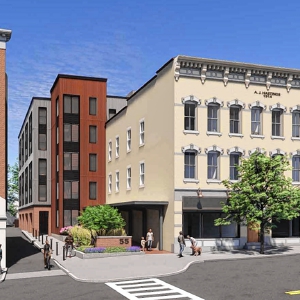 Next 5-story building cleared to rise in downtown Amherst
Next 5-story building cleared to rise in downtown Amherst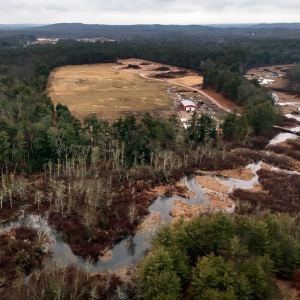 Gravel pit defenders in Granby make case
Gravel pit defenders in Granby make case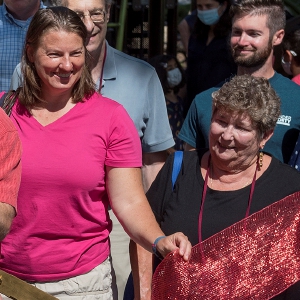 Amherst officials cool to bid to double spending hike for regional schools
Amherst officials cool to bid to double spending hike for regional schools